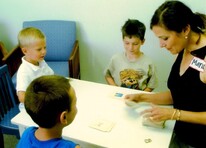Stuttering Teletherapy Option
Blending convenience and expert care with our stuttering teletherapy services
Whether you're across town or across the country, our virtual platform brings top-tier fluency support directly to you. Our specialized speech-language pathologists offer personalized in-home therapy sessions, tailored to meet your unique needs. Engage in effective, high-quality treatment that ensures your progress while maintaining the highest standards of security and confidentiality through our HIPAA-compliant telehealth services.
- Stuttering Treatment in the Comfort of Your Home
- HIPAA-Regulated for Your Safety
- Private & Protected Therapy Sessions



